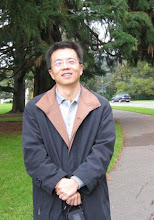Purpose: This course is delivered to the second year Master students at the Software School of Beijing University From July 15th 2003 to Aug 28th 2003
1. Objective
This course is designed for master students and embedded software engineers to have:
- A preliminary understanding of key techniques and tools used to implement embedded software;
- Hands-on experience on GNU tools used to develop embedded Linux based software;
- Hands-on experience on basic features of embedded Linux system programming;
This course is not designed for the students to understand everything of embedded system, which is not possible also. Although we are only using GNU tools and powerpc platform as the example throughout the course, the students are expected to gain the capability to pickup other tools and target platform at short time frame based on their understanding of GNU environment and Powerpc platform.
This course is not intended to teach:
- Software design process and methodology;
- C/C++ syntax and Linux OS;
- Target platform (Powerpc) architecture;
However, Understanding of these domains is pre-requirement for the course.
2. Course Outline
You can expect the following questions be answered during the course.
First of all, why we need the embedded system?
How special is the embedded system? Or How different it is from the desktop environment?
What is the development life-cycle of an embedded software project? Again, how it is different from a desktop software project?
What are the GNU tools used for a complete development life-cycle?
I have seen some tools not covered by this course, how could I understand these tools quickly?
What are the basic features to embedded Linux?
Why these features are important? What are the philosophyies behind?
My new embedded software project uses a scheduler I have never heard before, how do I analyze it?
3. Instruction Methods
This course is a hybrid of:
- Lecturers;
- On-class hands-on;
- Group discussion;
- Off-class projects.

No comments:
Post a Comment